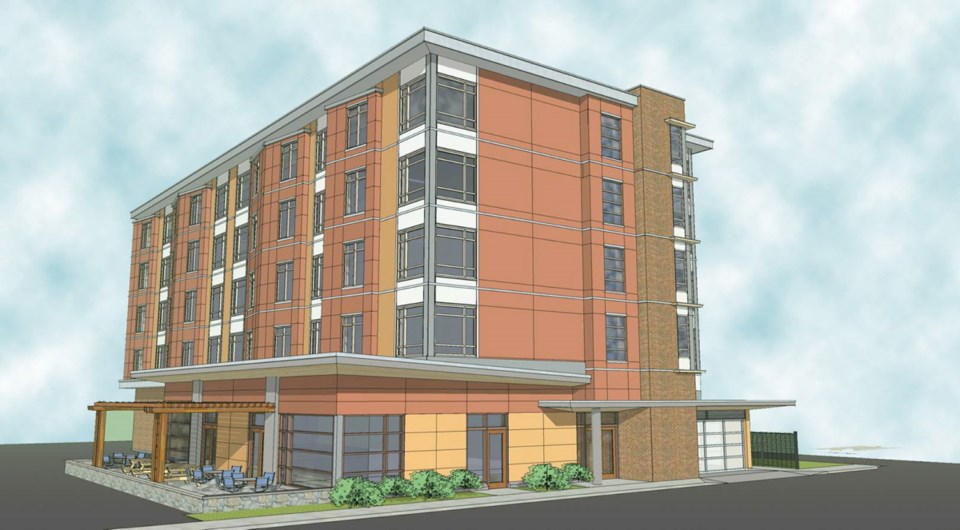Victoria housing advocates and churches are looking to each other to try to solve the problems of affordable home shortages and increasingly strained congregation resources.
“If this can work, it will benefit both of us,” said Kaye Melliship, executive director of the Greater Victoria Housing Society.
Her organization has put together a proposal to purchase a parcel of land from First Metropolitan United Church at 932 Balmoral Rd., at Quadra Street, and develop it into a 48-unit affordable housing complex. A 50-year-old hall behind the church would be torn down.
The $8.5-million project would include a main-floor multi-use space and outdoor seating area that the Inter-Cultural Association of Victoria is considering renting to complement its office space, which has been in the church basement for 17 years.
Their clients, largely new immigrants and refugees, could also be eligible to rent the below-market-value studio, one- and two-bedroom units.
“We’re in the very preliminary stages of planning,” Melliship said. “Everything still needs to be run by the congregation, who ultimately decides what happens next.”
The church’s redevelopment task force approached the housing society two years ago.
“The church is evolving in terms of membership and finances, with aging buildings to consider,” said project chairman Tim Richards. “The congregation is very interested to hear these plans. We will begin to present the work we’ve done in the next few months.”
Richards said this kind of redevelopment aligns with the social values of the church.
“There are some very strong benefits in the plans but also some implications we need to look at as well,” he said, adding neighbourhood associations will also be consulted.
A few doors down at St. John the Divine Anglican Church, the Divine Development project is in the works. The $15-million scheme includes three buildings built over the next 20 years that would provide housing, a meeting space and offices for local social service agencies.
Development team chairman Graeme Brown said the idea came about a few years ago when the church needed a new $750,000 roof and spoke to each member for support.
“One thing we kept hearing is, ‘If we’re going to spend that much on a roof, we want to make sure we’re still around and relevant 20 years from now,’ ” Brown said, adding the congregation has grown slightly in recent years. The other question was: What are we doing for our mission in the community?
“What became evident was the lack of housing for the working poor,” he said. “Also, there are a lot of non-profits in need of space.”
The Divine Development has a master plan and received a 99-year lease from the diocese for the project and is looking for community partners to help fund it.
Churches have a long worked to help house the poor, said Dylan Sherlock, who put together the Victoria Community Social Planning Council 2013 report Building from Faith, a guide for faith groups wanting to redevelop underutilized church lands for social purposes.
“There’s a long history of housing the poor, especially in the Catholic Church, and for seniors,” Sherlock said. In Greater Victoria, these include the low-income seniors home Dawson Heights built by the Anglican diocese in 1949, St. John’s Society and First Baptist senior housing, Anawim House for the homeless created by St. Andrew’s Catholic church and the many projects of St. Vincent de Paul.
“But the big churches that had a massive presence in Canada and Victoria, the Anglican and United especially, are selling off properties and closing churches,” he said. The context now is different.
With affordable housing needs set to outstrip demand by 21 per cent over the next two decades, and increasing costs to run churches for shrinking congregations, Sherlock said an opportunity presents itself.
This is where partnerships with community groups come in and can help both churches and social housing thrive, he said.
“You have to look at the pros and cons but often the values of both can match up,” Sherlock said.



